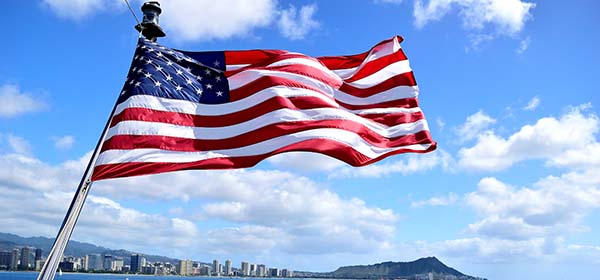
UPDATE : 2024/04/19

UPDATE : 2024/04/19

UPDATE : 2021/07/14

UPDATE : 2024/01/17

UPDATE : 2024/01/17

UPDATE : 2024/01/31
Contents

ESTA is a “Electric System for Travel Authorization” for visitors to the U.S. within 90 days of sightseeing or short-term business. On the other hand, visa is a “permit” to allow long term stay in the U.S. for business, being an exchange student and being an employed in the U.S. However, the person who visits U.S. as an exchange student or a worker is required to obtain certain visa even if their stay is within 90 days.
Every visitor to the U.S. must obtain either ESTA or a visa. Applying for ESTA is recommended for those traveling to the U.S. for up to 90 days for sightseeing or a business trip. In January 2009, the U.S. Department of Homeland Security (DHS) began requiring travelers to apply for the Electronic System for Travel Authorization (ESTA). ESTA is required for foreign nationals visiting the U.S. for up to 90 days for sightseeing or other purposes, and they must complete the ESTA application process prior to boarding their U.S.-bound flight or vessel. A visa, on the other hand, is required for stays of longer than 90 days. The visa system can be described as one intended for those vising the U.S. mainly for business purposes or to attend school. When deciding whether to apply for a visa or ESTA for travel to the U.S., you need first of all to make certain the period of time you intend to stay in the U.S. and the reason for your trip.
What is ESTA?
| 1. When visiting for sightseeing purposes (for up to 90 days) |
Individual travel, family travel, group travel, visiting homes of friends or relatives, volunteer activities, participation in events or contests without remuneration |
| 2. When visiting on business (for up to 90 days) |
Participation in business discussions or negotiations, attending meetings, attending educational, scientific, or other specialized conferences or events without remuneration |
| 3. When transiting in the U.S. to a third country (including temporary transit or transfer) |
When transiting at an airport in the U.S. to a third country |
Cases of traveling to the U.S. for ordinary sightseeing or short-term business travel can be described as cases in which applying for ESTA is appropriate before traveling to the United States. Also, since you must apply for ESTA even when staying in the U.S. for just a few hours or transiting in the U.S., be sure to apply for ESTA if traveling to a third country via the United States. One condition of applying for ESTA is that the applicant have a machine-readable passport with an IC chip. (At present, all passports issued in Japan have IC chips.) Also, when applying for ESTA your passport must be valid through the date you will leave the U.S., therefore be sure to check your passport’s expiration date and your planned period of travel. If you plan to travel to the U.S. for employment, study, or permanent residence, you must apply for a visa, not ESTA. You will need a visa, instead of ESTA, if you plan any paid labor or employment in the U.S. even if staying no longer than 90 days. Consider applying for a visa if you plan on staying in the U.S. for a long time.
| 1. When you want to stay in the U.S. for more than 90 days | You must apply for a visa (B2 visa) if you want to stay in the U.S. for more than 90 days, no matter what the reason. |
| 2. When traveling to the U.S. for paid employment or long-term business purposes | You must apply for a visa (B1 visa) if you are traveling to the U.S. for employment or business purposes involving remuneration, even if not staying longer than 90 days. |
| 3. When you plan to study in the U.S. | You need the designated visa if you plan to study for 18 hours or longer in a week, no matter how long you plan to be in the U.S. |
| 4. When staying for a long period in connection with a specialized field, special skills, or an artistic field | Those planning to stay in the U.S. for a long period for purposes such as activities in specialized fields like education, science, history, or medicine, instruction in specialized skills, or entertainment or sports should consider applying for the designated visa. |
There are various types of visas depending on purposes of travel to the United States, and those acquisition conditions and permitted staying periods vary. Especially the visa for studying abroad varies conditions and staying periods, please apply for a visa suited to your travel purposes.
| F-1 visa | Accredited universities and high schools in the U.S., licensed language study in the U.S. |
| M-1 visa | Study at specialized schools and trade schools in the U.S. |
| J-1 visa | Cultural-exchange visits and study as exchange students at schools in the U.S. |
| B-1 visa | short term business, conference and research in the U.S. |
| B-2 visa | sightseeing and attending events in the U.S. |
Acquisition of B1-visa is required for traveling to the U.S. for short-term business, and B2-visa for those who wish to stay over 90days for sightseeing. B1-visa・B2-visa are called “B-visa” as their generic name and categorized as the most general visa in the U.S. visas. B-visa is available for wide range of use, and smoothly obtainable if no serious fault or criminal record in the past. A visa is a permit for entry to the U.S., but not the guarantee of the staying period in the U.S. The staying period would be determined by the immigration official at the time of the entry into the U.S., therefore it is not the expiration date of the visa=staying period. In case requesting the extension of the stay after determined staying period, it is applicable for 6 more months the longest.
A definite reason is required when apply and it is not permitted if judged as questionable. Overstay may be indicated if the purpose of the extension application is for long-term sightseeing.Follow the visa expiration date and show intension to return home country, and also to make plans with reasonable schedule.
For details of B1・B2-visa

Article 214 (b) of the U.S. Immigration and Naturalization Act states that every alien present in the United States or undergoing immigration screening shall be presumed to be an immigrant until he establishes to the satisfaction of consular or immigration officers that he or she is entitled to nonimmigrant status. This means that by definition all people with foreign nationality who enter the U.S. are deemed to be doing so with the intention of immigrating to the country. In light of this definition, the U.S. has adopted the Visa Waiver Program (VWP), under which nationals of certain countries are permitted to enter the U.S. without obtaining visas if they satisfy certain conditions. Since January 2009, obtaining ESTA has been required as one of the conditions of using the VWP. Applying for and obtaining ESTA enables smooth entry to the United States. The nature of ESTA differs from that of a visa in that ESTA is a system of authorization to travel to the United States. Even for those babies who do not require air tickets must have ESTA when traveling to the U.S., therefore remember to apply for ESTA for any babies traveling with you.
Not everybody in the world can use the Visa Waiver Program (VWP). Be forewarned that persons who meet the descriptions below may not use the VWP:
Persons who meet any of the descriptions above may not travel to the U.S. using the Visa Waiver Program (VWP) and ESTA. Since applications of such persons are likely to be rejected, they should consider applying for a visa to visit the U.S. instead of using ESTA.
ESTA expires in two years from the date it was authorized. It is unlike a passport there is no renewal system for ESTA. Re-application for ESTA is required if it is expired by the time of your re-visit to the U.S. For more information of ESTA expiration date and re-application, check “ESTA re-application and expiration date”.
A visa, on the other hand, is valid for 10 years. While the visa remains valid even if your passport expires during this 10-year period, showing both old and new passports at the immigration would be required on your entry to the U.S.
For details concerning visas, contact a U.S. embassy or consulate.

There is no limit on the number of times you may enter the U.S. under either ESTA of a visa. However, if reentering the U.S. using ESTA soon after staying for nearly 90 days, you can expect to be questioned in detail by the immigration officer about the purpose of your visit. In such a case, you will need to demonstrate a valid reason for visiting the U.S., so be sure to prepare detailed documents showing where you will stay, your period of stay, and the date you plan to return to your home country. If you are not permitted entry under ESTA, the refusal of entry will be recorded, and you will be subject to stricter screening when traveling to the U.S. using ESTA in the future. Generally speaking, those who plan to visit the U.S. frequently and those staying for about 180 days in total during the year should consider applying for a visa instead of ESTA.
Being in the U.S. unlawfully after the end of your authorized period of stay is referred to as overstaying. The U.S. is strict about overstaying, and even unintentional violations may be subject to fines or penalties. Those planning to stay for a period of nearly 90 days (the maximum stay under ESTA) in particular need to plan their travels carefully, because staying even one day over the 90-day limit is considered overstaying. Overstaying even once is a violation of the Immigration and Naturalization Act, subject not only to prohibition of entering the U.S. for a period of several years to 10 years in length but also, in some cases, to never being permitted to enter the country again. While there is little fear of overstaying when traveling to U.S. using ESTA for a short period or on a tour organized by a travel agent, if visiting the U.S. for several months using ESTA or planning to stay for almost half a year on a visa, take care to avoid staying in the U.S. longer than planned.
Cases of overstaying a period of stay in the U.S. by 180 or more days but less than one year are punishable by prohibition of travel to the U.S. for three years. Overstaying for one year or longer is punishable by prohibition of travel to the U.S. for 10 years. While cases of overstaying for less than 180 days are not penalized, a record of the overstay will be kept. Since an overstay can result in restrictions on travel not only to the U.S. but to other countries as well, those who travel abroad frequently need to plan their trips carefully. There have been cases in the past of overstays resulting from cancelled departure flights and unexpected strikes. While ESTA enables smooth entry to the U.S. and staying for 90 days or longer, travelers themselves are responsible for decisions on when to plan to leave the country. It is recommended that travelers plan to leave the U.S. at least one week prior to the end of their periods of stay, to avoid unforeseen difficulties.
A valid passport and a credit card to pay for application fee are needed when apply for ESTA. Enter ESTA applicant’s passport information. When guardian applies ESTA for his/her child, a passport information must be child’s. A credit card does not have to be same as applicant’s.
Details for ESTA application, check “Samples” : How to apply ESTA
ESTA application is required when travel to the U.S. without visa. With ESTA but visa, the longest period of stay in the U.S. is 90 days. It is valid for 2 years from the date of its acquisition, and it allows multiple visits to the U.S. during the period. ESTA is not subjected to the person who visits the U.S. for business or work, and he/she must apply specific visa. ESTA is a system introduced for pre-screening a general visit to the U.S, and it does not necessarily guarantee the entry to the country. A final decision to the entry to the country is up to the immigration officer at the arrival airport, and the person who visits the U.S. often without visa may be considered as if he/she wishes to be a permanent residence. The person who visits the U.S. often though it is within 90 days of staying period may want to hold visa depending on the purpose.
ESTA (Electric System for Travel Authorization) is a system for travelers to visit the U.S. for less than 90 days of sightseeing and business. It is available for citizens of subjected countries of VWP(Visa Waiver Program) determined by U.S., and the application should be completed online at least 3 days prior to departure date. Those who have obtained “travel authorization” by applying ESTA are waived for visa acquisition by satisfying its requirements such as purpose and staying period. On the other hand, visa is a required entry permit for those who wish to study abroad, work, and stay over 90 days of long period in the U.S. Those subjected to followings are required to obtain visa not ESTA when traveling to the U.S.
Visa have variety of types depending on the purposes, and condition of the acquisition and available staying periods differ from each other. Even if your staying period is less than 90 days, but plan to work in the U.S. are out of subject to ESTA application.
The U.S. non-immigrant visas have many varieties. Decide which one to obtain depending on your purpose of the visit and occupation.
Details for variety of visas and how to apply, check ”Variety of U.S. visas (non-immigrant visa application)/how to apply”
ESTA is applied online only. A valid passport, credit card, and send/receive-able e-mail address are required when apply. Must enter applicant’s information to ESTA application form. ESTA application for minor must enter his/her passport information, not the guardian’s. A name on the credit card can be different from applicant, and it does not affect the screening.
More information of how to apply ESTA, check here Samples: How to apply ESTA.
UPDATE : 2023/02/13